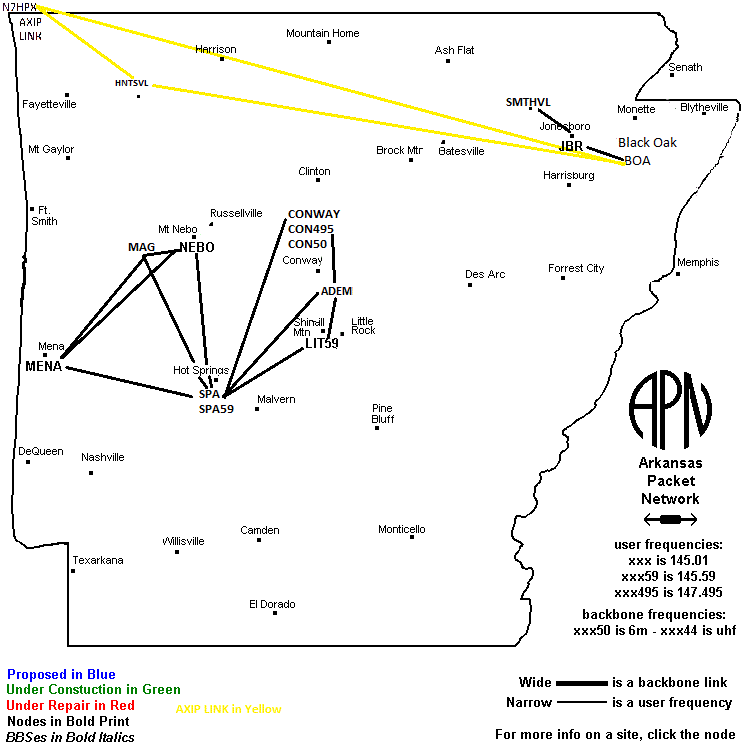|
Packet
Radio
Packet radio is a form
of packet switching technology used to transmit digital data via
wireless communications. Packet radio uses the same concepts of data
transmission using datagrams that are fundamental to communications
on the Internet, as opposed to older techniques used by dedicated or
switched circuits. Packet radio can be used over long distances
without the need for a physical connection between stations. Packet
radio can also be used for mobile communications.
Current Arkansas Packet Map,
as of 03/10/2019

Packet radio is a digital radio
communications mode. Earlier digital modes were telegraphy (Morse
code), teleprinter (Baudot code) and facsimile.
It is possible for any packet station to act as a digipeater,
linking distant stations with each other through ad hoc networks.
This makes packet radio especially useful for emergency
communications. Mobile packet radio stations can automatically
transmit their location, and also check in periodically with the
network to show that they are still operating.
The most common use of packet radio is in amateur radio, to
construct wireless computer networks. Packet radio uses the AX.25
(Amateur X.25) data link layer protocol, derived from the X.25
protocol suite and adapted for amateur radio use. AX.25 was
developed in the 1970s. AX.25 includes a digipeater field to allow
other stations to automatically repeat packets to extend the range
of transmitters. One advantage is that every packet sent contains
the sender's and recipient's amateur radio callsign, thus providing
station identification with every transmission.
A basic packet radio station
consists of a computer or dumb terminal, a modem, and a transceiver
with an antenna. Traditionally, the computer and modem are combined
in one unit, the terminal node controller (TNC), with a dumb
terminal (or terminal emulator) used to input and display data.
Increasingly, personal computers are taking over the functions of
the TNC, with the modem either a standalone unit or implemented
entirely in software. Alternatively, multiple manufacturers
(including Kenwood and Alinco) now market handheld or mobile radios
with built-in TNCs, allowing connection directly to the serial port
of a computer or terminal with no other equipment required.
The computer is responsible for managing network connections,
formatting data as AX.25 packets, and controlling the radio channel.
Frequently it provides other functionality as well, such as a simple
bulletin board system to accept messages while the operator is away.
Following the OSI model, packet radio networks can be described in
terms of the physical, data link, and network layer protocols on
which they rely.
|
|
